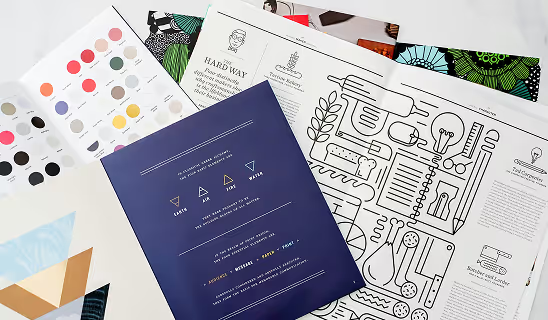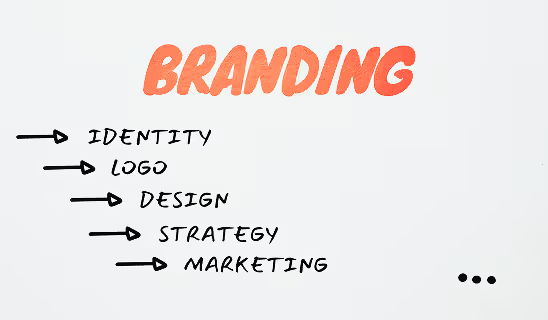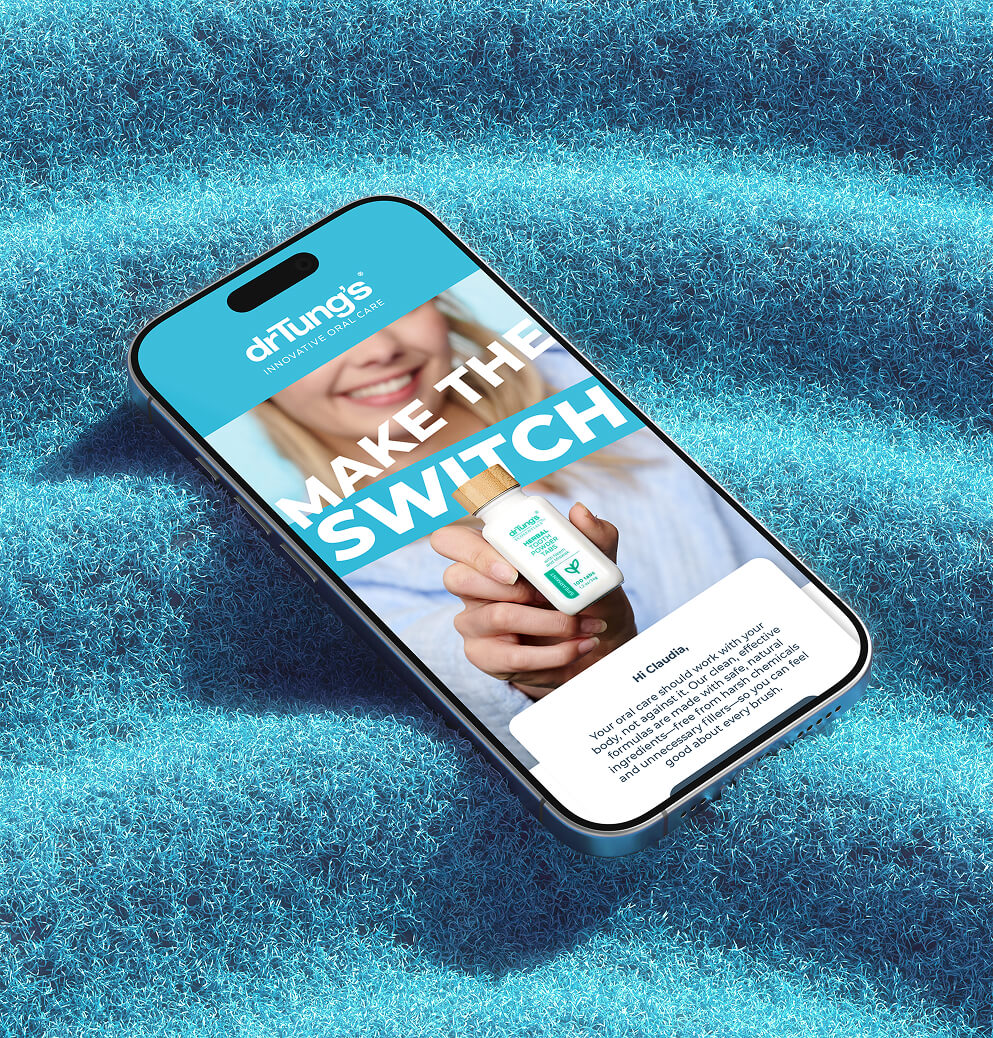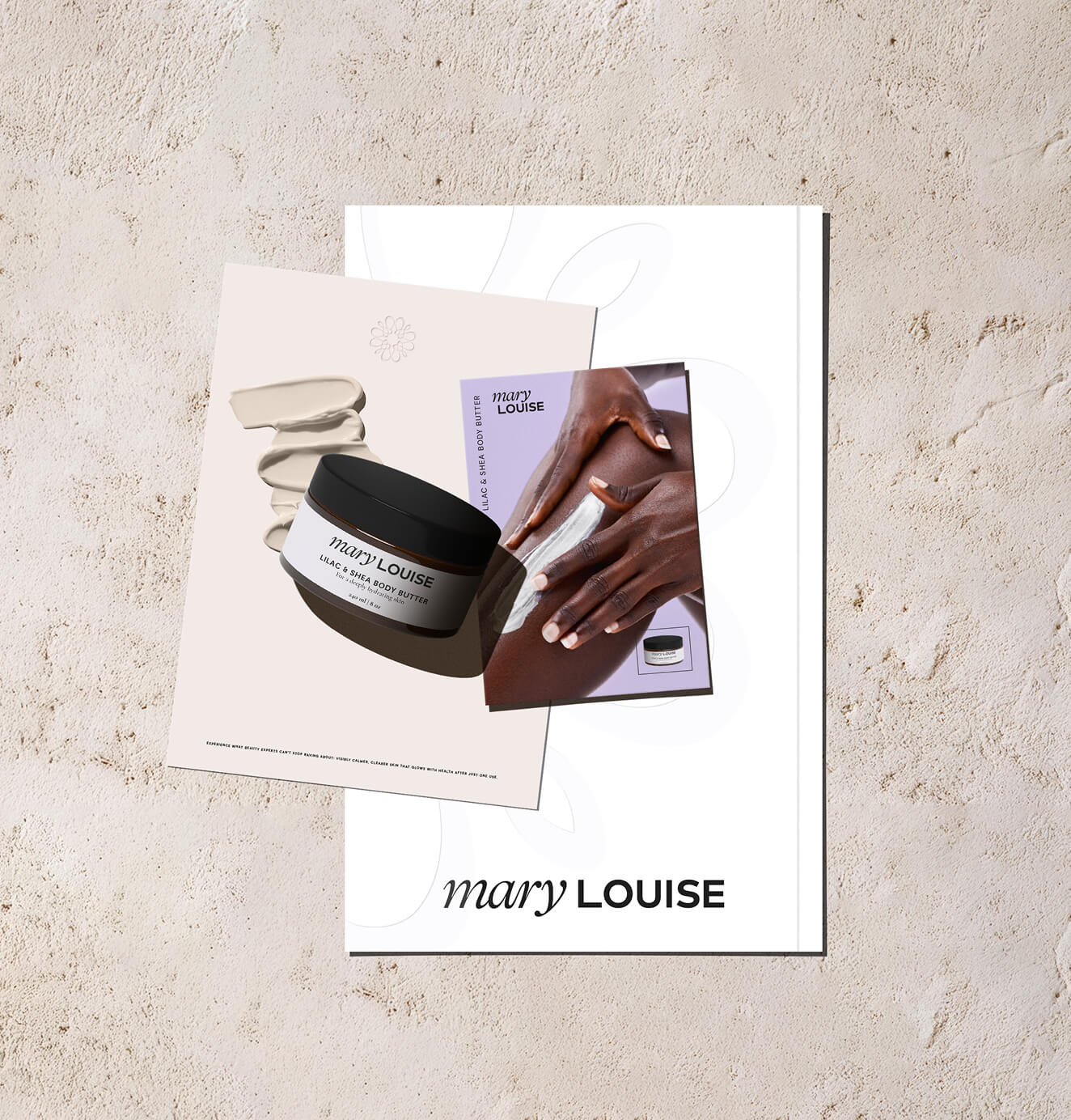The Ultimate Guide to Creating a Brand Identity
03/10/2025
Brand Strategy
Creating a strong brand identity is essential to building recognition, trust, and lasting impact in any industry.

Hey there, you digital wanderer! Ready to carve out a brand identity that doesn’t just stick, but becomes legendary? Dive deep into the raw essence of brand recall, loyalty, voice, and personality. In the digital chaos, craving to stake your claim? That's where we step in. We aren't your run-of-the-mill agency; we're the underground mavens, the visionaries tailored for those ready to redefine the rules. Navigating the maze of branding, and feeling the burn? Time to shake things up. If you're aiming for a brand voice that echoes and a brand personality that's infectious, you're in the right alley. Scroll to get schooled on the real deal, or better yet, let us helm the ship. While you amplify the other dope facets of your venture. Promise, we deliver gold. The brand world's wild – are you ready to dominate?
.png)


Identity Vibes: Raw & Uncut Branding Guide



What is brand identity?
Brand identity is that blend of visual swag and verbal mojo that sets a brand apart in the crowded club of consumers' minds.
A well-developed brand identity may include:
- logo,
- colour palette,
- typography,
- iconography,
- illustrations,
- photography,
- website design,
- app design,
- packaging,
- marketing messages,
- brand voice,
- brand tone,
- brand personality,
- mission,
- vision,
- brand story,
- brand style guide,
- brand images and brand assets,
- key elements, and
- other visual brand elements.
At the heart of it, crafting a brand identity is like mixing a killer playlist – every track (or element) must vibe together. This not only gives the audience a seamless brand jam but also drops some serious trust and cred in the ears of those potential fans.
How Brand Management Can Impact Your Brand Identity
Brand hustle – or what the suits call 'brand management' – is crucial for every brand out there.
It's the DJ keeping the brand's beats consistent track after track. And this? It's the pulse behind a brand's identity.
Stay consistent, and you're laying down tracks for epic brand recognition and some wicked vibes in the crowd's minds.
Why is Brand Identity Important?
Brand identity? Think of it as the electric guitar riff that makes heads turn. It shapes how customers vibe with your brand and sets the stage for trust.
Rocking a consistent and unforgettable brand look and feel amplifies recognition, gets fans humming along (brand recall), and has them cheering encore (loyalty) every time.
It's your visual and emotional anthem, helping you belt out your brand’s core values and stance, especially when the market feels like a mosh pit of competition.
Choose your brand's colors, typography, visuals, and rules like you'd choose notes for a chart-topper. Nail it, and you won't just be heard; you'll be felt. And that connection? It's the ticket to greater visibility, skyrocketing sales, and a legacy of growth.
But hey, you've got to tune into your audience. Know their rhythm, their likes, and what makes them cheer. When your brand jams to their beat and delivers a consistent performance across every stage, you're not just another act. You're a legend in the making, building trust and growing one encore at a time.
The Branding Process to Create your Brand Identity
Branding isn't a cookie-cutter game – every brand and business beats to its own drum. Yet, most branding jams follow a rhythm that, when hit right, can make your brand groove stick.
The dance usually kicks off with some deep dives into research, tuning into your brand goals, and drafting those all-important brand beats and standards. It's about sketching out those iconic logos, picking out the right visuals, and setting the tone with your font and color choices. Then, crafting those head-turning marketing pieces like slick websites and attention-grabbing ads.
Got that look on lock? Time to hit the stage. Test those branding elements with your crowd, launch them across stages like social media and email gigs, and keep an eye on the applause (read: metrics). Rock on, refine based on the feedback, and tweak to keep the crowd hooked.
How Does Brand Strategy Impact Your Brand Identity?
Brand strategy? Think of it as the master playlist that ensures every track – or branding element – vibes together for one epic experience.
To craft this chart-topper, you've gotta dive into your brand's ambitions, pinpoint your fanbase, scope out the other bands in the scene, nail your unique sound, and lyrically express your message.
Your brand strategy? That's your compass when defining your fresh brand identity.
To make your brand the main act that not only draws a crowd but keeps them coming back for more, jam with a seasoned branding crew who knows how to turn strategy into legendary.
Research and Analysis
Before dropping that brand beat, the prelude is all about market research. Tune into your audience, scope out the scene, vibe with your brand's ambitions, find your unique spot on the stage, and more.
Armed with these insights, you can craft a brand identity that doesn’t just catch attention but becomes an anthem, setting you apart from the rest of the playlist.
This information is essential to creating a strong brand identity that resonates with your customers and differentiates you from the competition.
Brand Persona
With a solid grasp on your audience and what you aim to hit, it's time to sculpt your brand persona.
It's like sketching out the ideal fan – the ICP. This lets you spotlight those you're serenading and tune into their cravings, dreams, hopes, and even their occasional off-key moments.
Claiming Your Rhythm: Brand Positioning
Ready to anchor your brand identity?
Step one is finding your unique rhythm among the masses.
It's the sync between what you jam out and how it resonates with your crowd's desires.
Identify the cravings of your audience and lay down the melody that satisfies.
Craft your brand's blueprint – its vision, mission, those foundational brand pillars, the key messages, and its essence.
And don't forget that memorable tagline that lingers long after the track ends.
All this shapes the stage, ensuring your brand's act is the one everyone's tuned into.
Brand Soul: Digging Deep
Branding? It's that deep dive where you vibe with your fans, forging bonds stronger than the heaviest bassline. It's all about that emotional encore, cultivating trust, and sealing the deal on authenticity. Hence, every beat of your branding should be driven by a solid, purposeful motive.
Your brand's purpose is the chorus – it's about your grand dreams and the impact you aim to rock in the world.
Mission Anthem:
To amplify your brand's voice and guide your branding gigs, a clear-cut mission anthem is essential. This tune lays out the goals of your branding tour, ensuring every performance aligns with the final encore you envision.
Brand Pillars












To help guide branding decisions and keep your brand on track, it is also important to identify branding pillars. These are the key messaging themes that you want your branding to reflect and communicate to your customers.
Brand Identity Key Messages
In addition to branding pillars, it is also important to develop a set of key branding messages that reinforce your branding pillars. These messages should be consistent across all branding elements, including your logo and visual branding, website design and content, marketing collateral, social media presence, customer support interactions and more.
Brand Personality
In addition to branding pillars and key messaging, it is also important to consider your brand personality.
This should be reflected in the branding elements you choose, as well as the tone you use throughout your branding.
By developing a distinct brand personality, you can connect with customers on an emotional level and build deeper relationships with them.
Brand Communication Strategy
Your brand communication strategy includes setting communication objectives and creating communication principles.
It includes defining your brand voice and tone and a detailed explanation of how to use and adjust your brand voice and tone for different circumstances.
It includes setting clear guidelines for your copywriters and marketing team to follow and strategies on how to connect and communicate with the target audience.
Your Brand's voice
Your company creates a professional, witty, and smart branding voice that reflects your brand's values of authenticity, quality, and customer satisfaction.
Your branding is focused on building strong relationships with customers and creating emotional connections that build trust and loyalty over time.
The Visual Appearance of your Brand Identity
Your visual brand identity is different from the brand strategy, communication and positioning we've just reviewed.
One key element in the visual aspect of your brand is your company logo or brand's logo and your brand colour palette.
These tangible elements created by a graphic design help to shape and form the brand's identity.
Brand Identity Concepts
Once you clearly understand your brand positioning and goals, it is time to start the visual creative process and explore different visual concepts for your brand.
Your brand concepts will inform your brand identity design and help to create an aligned brand image.
Brand concepts should include logo direction, colour palette selection, typography, design elements, mockups and a mood board.
Once you've selected a final concept, you can move on to creating the brand elements that will contribute to the company's brand identity.
Brand Identity Logo Design
Your brand identity logo is one of the most essential brand elements, as it serves as a visual representation of your brand.
Many factors go into designing an effective logo, including choosing the right design style, incorporating unique design elements and ensuring that the logo will work across various platforms and media.
Types of logo design include word marks, letter marks, brand marks, and combinations of the same.
It is important to carefully consider all brand elements when creating a new logo, as the design should reflect your brand values, personality, and positioning in order to engage your target audience effectively.
Do you need a custom logo designed for your new business?
Shop: Logo Design Services
Brand Identity Elements
Once you have your logo finalized, it's time to start creating the rest of your brand elements.
This may include designing and creating custom iconography, art and illustrations, mascots, patterns, design systems, colour palettes and typography.
You then need to take these custom brand elements and showcase them in a presentation.
Brand Colors and Branding Palette
The colours you choose for your brand can significantly impact how your target audience perceives your brand.
It is important to carefully consider the colours that make up your branding palette, as they should reflect both your branding pillars and key messages in order to engage customers and build trust with them effectively.
Brand Fonts
In addition to your brand colour palette and other brand assets, you will also need to choose a brand font or typography style that is consistent with your brand's visual identity.
This should be carefully considered and selected, as it will play a key role in conveying the tone and personality of your branding.
Brand Guidelines
Brand guidelines are critical to branding, as they help ensure consistency and cohesion across all brand elements.
These guidelines typically include detailed information on logo use and placement, typography usage, typography pairings, colour palette, colour hierarchy, colour tones, colour gradients, colour guidelines, iconography guidelines, pattern guidelines, rendering guidelines, photography guidelines, website guidelines, social media guidelines and a one-page style guide.
Packaging Design for your Brand Identity
One of the final steps in creating your brand identity is your packaging, this may only be applicable to brands that sell physical products.
However, service-based businesses may also have welcome gifts, onboarding packages and other reasons to create and develop custom packaging.
Your packaging design will be fairly straightforward should you follow your brand guidelines, which include your colour palette, typography, logo guidelines, approved social media icons, value icons and more brand asset guidelines.
Website Design for your Brand Identity
Your branding strategy should also include a well-designed website that reflects the brand and effectively engages customers.
The design of your website can play an important role in building trust and conveying your brand positioning to consumers, so it is critical to work with a skilled web designer who understands branding best practices and how to create a user-friendly and visually appealing site.
Some key factors to consider when designing your website include choosing the right branding colours, fonts, imagery, and branding patterns that align with your brand identity. However, if you followed our guidelines here, your brand guidelines should greatly assist.
Want to learn more about brand platforms, Brand Strategy and Brand Identity? Keep reading!
If you need help with your companies brand strategy and identity, contact us for a free custom quote.
An example of some Iconic Brands

If there is one particular brand that's known worldwide, it's the Coca-Cola company. Coca-Cola has a great brand identity, and they've created branding and marketing strategies that have truly become iconic over the years.
Coca-Cola has created a personal connection with the target market by highlighting the nostalgia and happy memories many people associate with their brand.
They are an iconic brand that has been successful in building trust and loyalty among its customers.
Coca-Cola's brand identity, including its logo and other visual elements, are instantly recognizable around the world, and its branding consistently reflects its values of fun, happiness, and celebration.
Coca-Cola's company's mission is to become the world's most iconic and beloved brand. It's known for its branding pillars of authenticity, quality, and customer satisfaction.
Coca-Cola's brand's personality is professional, witty, and smart, and its brand voice is confident, bold, and inspiring.
Customers perceive Coca-Cola as a trustworthy and reliable brand thanks to its strong branding strategy and consistent branding elements that have been carefully crafted over many years.
Coca-Cola's customer's perceived value is focused on emotional branding, as they believe that branding and marketing efforts have helped them create meaningful connections with their target market.
Brand Trust and Brand Loyalty: Important Parts of Brand Identity
Building trust and developing brand loyalty are key goals for any branding strategy.
By clearly communicating your brand positioning and values, designing compelling branding, and providing a consistently high-quality experience to customers, you can build strong relationships with them that will lead to increased trust and customer loyalty over time.
This ultimately defines if a brand's identity is successful and if you created a strong brand and positive brand image.
The Marketing Materials You Need for a Brand Campaign
Leveraging branding materials is a critical part of any brand campaign. Some key branding materials to consider include:
- Website design and branding elements, such as logos, images, colours, fonts, and branding patterns.
- Marketing collateral, such as brochures, flyers, posters, banners, business cards, and other branded print materials.
- Luxury brands are renowned for their strong branding and branding strategies, with many creating iconic brand identities that have helped them stand out in a crowded marketplace.
Some notable examples of luxury brand identities include Gucci, Louis Vuitton, Chanel, Hermès, Prada, and Burberry.
These brands are known for luxury brand identities and are often characterized by their high-end branding elements, such as stunning visuals and creative branding patterns that evoke feelings of luxury and exclusivity.
Conclusion: How to Create a Brand Identity Your Audience Will Love

Creating a successful brand identity is about more than simply choosing the right branding colours, fonts, and images.
To truly create an effective branding identity strategy that resonates with your audience and helps you achieve your business goals, it's important to consider all aspects of branding in terms of consistency, customer engagement, and emotional connection.
A successful brand also knows when to collaborate. Working with a professional such as a graphic designer or brand strategist will allow you to remain in your own zone of genius while building a strong brand identity.
A professional agency like The Branded can provide you with a strong brand identity, complete with a comprehensive library of brand assets, including your brand colours and typography, brand style guide, and brand guidelines. All of which will contribute to creating a memorable brand identity to enhance your brand image.
Reach out to The Branded, and let us collaborate with you to develop a powerful brand identity.

Sloane Avery
As entrepreneurs, they’ve built and scaled their own ventures from zero to millions. They’ve been in the trenches, navigating the chaos of high-growth phases, making the hard calls, and learning firsthand what actually moves the needle. That’s what makes us different—we don’t just “consult,” we know what it takes because we’ve done it ourselves.
Want to learn more about brand platform?
If you need help with your companies brand strategy and identity, contact us for a free custom quote.
We do great work. And get great results.
+2.3xIncrease in revenue YoY
+126%Increase in repurchase rate YoY








+93%Revenue growth in first 90 days
+144% Increase in attributed revenue








+91%Increase in conversion rate
+46%Increase in AOV








+200%Increase in conversion rate
+688%Increase in attributed revenue












